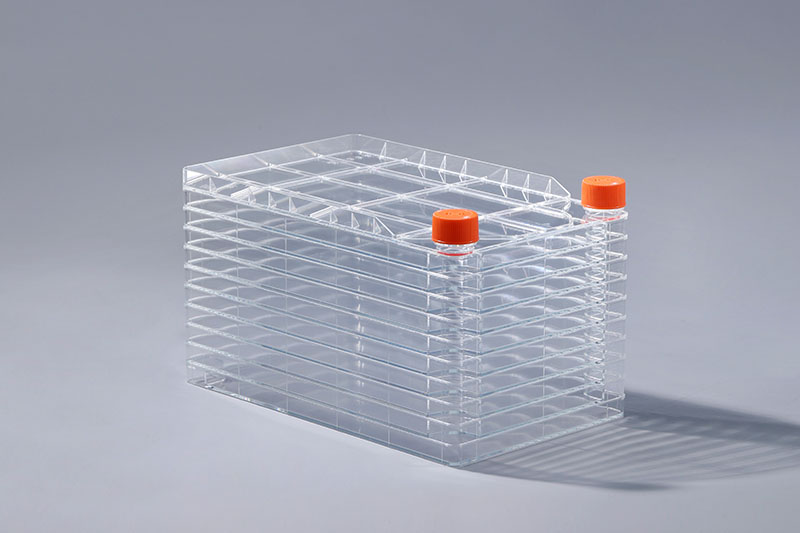Cell factory culture technology is a commonly used culture method for many large-scale cultures. When culturing cells, it will be affected by many factors, which hinder the normal growth and reproduction of cells. Radiation and ultrasonic waves are one of them.
Visible light: The wavelength of visible light is 390~780nm. Various colored light can cause cell degeneration, prolong the interphase of nuclear division, and significantly reduce the ability of cells to attach to the wall. Therefore, when using the cell factory for in vitro culture of cells, direct sunlight should be avoided, and the culture should be carried out in the dark or stored for a short period of time as much as possible.
Ultraviolet rays: Cells that are highly tolerant to weak UV rays do not change much, but sensitive cells are damaged. When the ultraviolet rays are strong, the isolated cells show that: complete mitosis cannot be performed; syneresis is increased during mitosis; cytoplasmic blebbing is reduced during mitosis. Blisters form on the irradiated surface, followed by cell expansion and more damage.
Radiation: X-rays have obvious damage to cells, B-rays can affect the division of nucleus, and R-rays reduce the number of nuclear divisions and cause abnormal nuclear divisions, which can cause cell death.
Ultrasound: Under the ultrasonic vibration, the cells will soon rupture, and the cytoplasm will flow in disorder at first, and the colloidal structure of the protoplasm will also change significantly. If the ultrasonic vibration is stopped, it can be restored. The cause of cell death is due to cavitation. When the ultrasonic wave is at 2.5W/cm2, the cells are damaged and the chromosomes are aberrant. The nuclear chromosomes are the first to be distorted.
Radiation and ultrasonic waves are important factors when using cell factories for cell culture. In addition, factors such as temperature, osmotic pressure, and pH value will also affect the growth and reproduction of cells. Controlling these factors can ensure normal cell growth.
The FAI climbed 5.9 percent year-on-year in the first 11 months of 2018, quickening from the 5.7-percent growth in Jan-Oct, the National Bureau of Statistics (NBS) said Friday in an online statement.
The key indicator of investment, dubbed a major growth driver, hit the bottom in August and has since started to rebound steadily.
In the face of emerging economic challenges home and abroad, China has stepped up efforts to stabilize investment, in particular rolling out measures to motivate private investors and channel funds into infrastructure.
Friday's data showed private investment, accounting for more than 60 percent of the total FAI, expanded by a brisk 8.7 percent.
NBS spokesperson Mao Shengyong said funds into weak economic links registered rapid increases as investment in environmental protection and agriculture jumped 42 percent and 12.5 percent respectively, much faster than the average.
In breakdown, investment in high-tech and equipment manufacturing remained vigorous with 16.1-percent and 11.6-percent increases respectively in the first 11 months. Infrastructure investment gained 3.7 percent, staying flat. Investment in property development rose 9.7 percent, also unchanged.
 English
English



















































